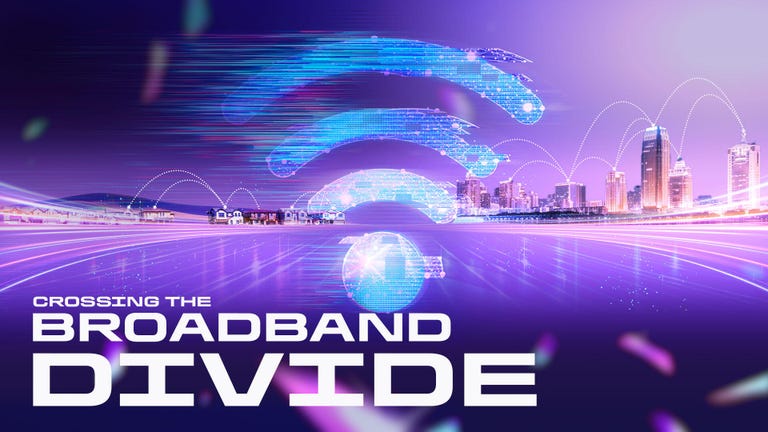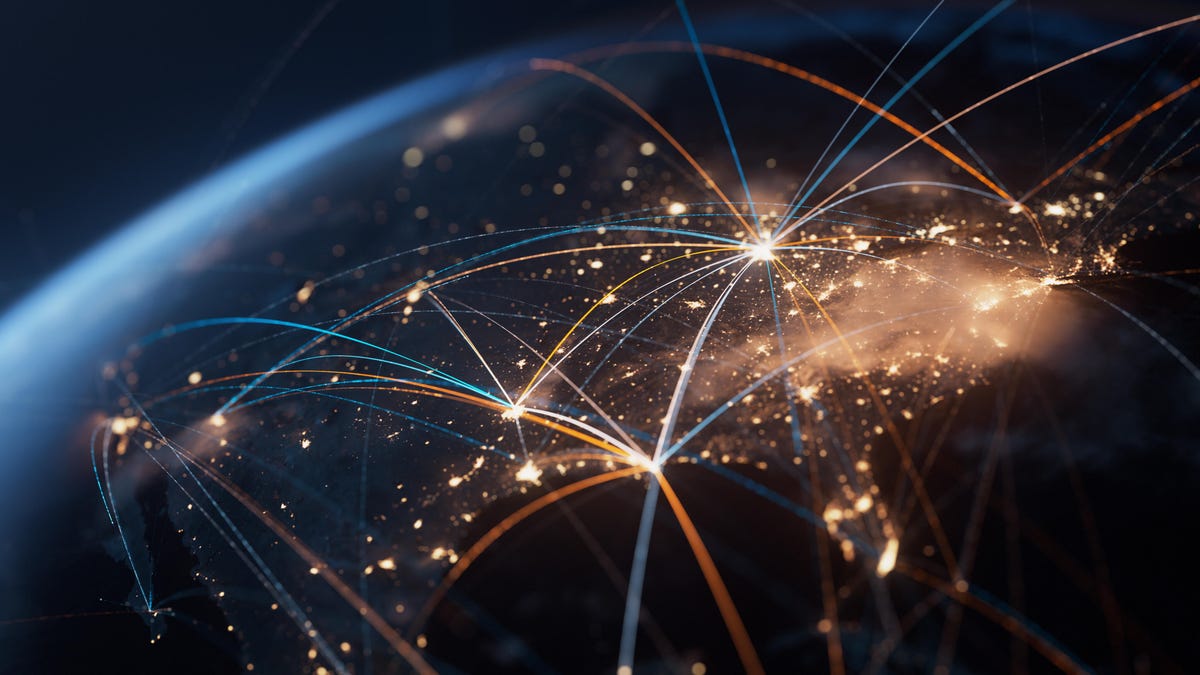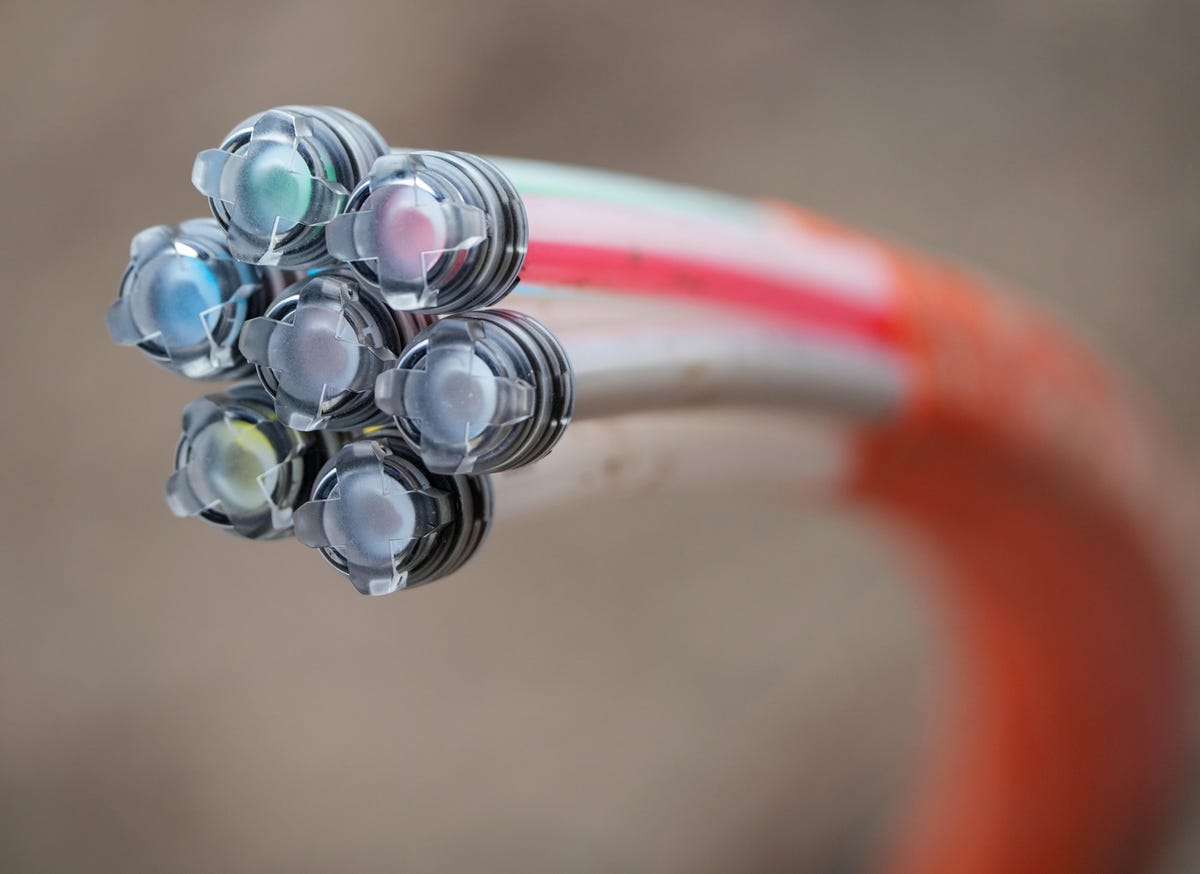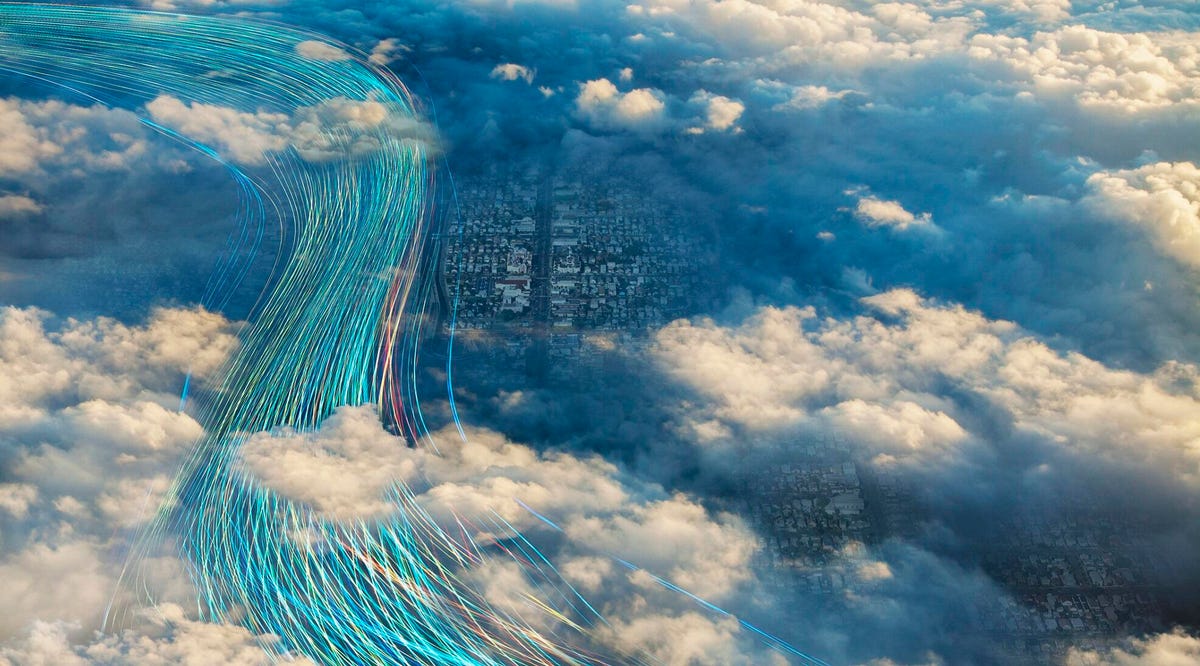Over three chilly days in the middle of February 2024 in Philadelphia, around 1,300 people from local and state governments, public advocacy groups, and community organizations gathered in conference rooms to hear the latest about digital inclusion.
The annual Net Inclusion conference, which aims to ensure everyone has access to digital technologies and services needed to engage with modern society, saw an increase in attendance from the previous year.
But looming above all of it was the impending end of the Affordable Connectivity Program, a government-funded internet subsidy that had already contributed much to the conference’s goals. As feared, ACP funds ran out in May 2024.
Digital inclusion and equity are among several entangled issues that need to be solved in order to give millions of people in the US access to high-speed internet as well as the education they need to take full advantage of it.

In late 2022, the Federal Communications Commission revamped its internet coverage maps. By late 2023, the agency’s second big revision revealed 7.2 million Americans lack broadband — a number only slightly smaller than the population of Washington state.
That is the so-called digital divide, a gap in the population that doesn’t have speedy internet. Whether working a remote job, doing homework for classes, shopping online, ordering groceries or simply staying connected to the outside world, modern living is a lot easier — and for some tasks, only possible — with the internet.
To connect more Americans, Congress designated a slice of the $1.2 trillion 2021 Infrastructure Investment and Jobs Act (Infrastructure Act), as well as a portion of the $350 billion 2021 American Rescue Plan Act that passed to provide financial relief during the COVID pandemic to fund projects that would cross this digital divide.
All told, the bills provide around $90 billion in funding for connectivity spread across a plethora of initiatives. The question remains: Will this colossal sum be enough to bridge the digital divide? If it doesn’t connect every American, how many will be left out of the modern digital world?
“We’ve been talking about the digital divide for over 25 years. We can finally do something serious about it,” said Alan Davidson, assistant secretary of the National Telecommunications and Information Administration.

The $90 billion in Congressional funding is split between various projects to improve infrastructure, affordability and educaiton.
It’s time to fix the digital divide
Some of the $90 billion has already been spent, but the largest chunk is waiting to be assigned state-by-state, providing a once-in-a-lifetime pile of money dedicated to solving a difficult problem with many thorny issues and piecemeal solutions.
In addition to advising the White House on telecom policies, the NTIA is responsible for doling out the portion of the Infrastructure Bill assigned to improve connectivity. Along with funding from the ARPA bill, Davidson and the agency are confident that this money will fix the digital divide and connect every American to high-speed broadband internet. The pressure is on to turn this rare financial windfall into a success story for America’s internet.
“We know we will not get this kind of funding again,” Davidson said.
The money from both bills is divided among different programs that divvy up funding for specific purposes — some for physical infrastructure like laying fiber cable, others for increasing affordability or educating the public on how broadband can improve their lives. Most of the money won’t finish filtering out for years to come. Still, it’s a roadmap for when some Americans may finally get broadband internet.
“The president has given us a very simple but ambitious mission to connect everyone in America with reliable, affordable high-speed internet service. We will reach that goal by the end of this decade,” Davidson said.
Net Inclusion 2024 was put on by the National Digital Inclusion Alliance, an association dedicated to improving broadband access through advocacy and policy. Its founder and executive director, Angela Siefer, laid out a bullish agenda to get the private sector, broadband industry, philanthropists and governments to contribute more to digital equity with the assertion that a connected and online-savvy workforce benefits all. And getting there requires more than just laying more fiber.
“Sometimes there’s a misunderstanding that if we just build more broadband networks, we will bridge the digital divide,” Siefer said. “We have digital divides in the United States that are not connected to whether or not the actual fiber and towers exist in your community, but rather, your digital skills and the device you have and your ability to afford broadband service.”
Siefer and her association want to put funding from the $2.75 billion Digital Equity Act to work. The DEA requires every state to have its own plan for addressing affordability and education, which Siefer believes served as a wake-up call for states from funders, philanthropists, local governments and industry members about digital equity. Years on, we’ll look back and see how significant this feedback’s impact was, she said.

Much of the $90 billion in funding will go toward expanding broadband networks made of fiber optic cables.
The digital divide is a three-headed hydra
Americans on the wrong side of the digital divide lack broadband for three main reasons: access, price or ability to use it. The $90 billion for connectivity is divided among programs to tackle one or more of these causes.
Some of the funding is laser-focused on regions or communities, like the Tribal Connectivity Program, which dedicates $3 billion to expanding connectivity on tribal lands (most of that funding comes from the Infrastructure Act). That includes laying fiber internet infrastructure, providing subsidies to reduce costs, and giving digital skills and workforce training. Nearly two-thirds of the funding has been spent, while the remainder is awaiting applicants.
Other broadband funding from ARPA has also been spent, including $7.7 billion from the State and Local Fiscal Recovery Fund as of last July. That amount was split between state and local governments, from building last-mile infrastructure in Box Elder County, Utah, to connecting residents and businesses in Brownsville, Texas, to high-speed internet. Some of these projects also took funding from a different ARPA slice for broadband and digital inclusion — $10 billion for the Capital Projects Fund.
What is BEAD?
But the program with the single biggest portion of the connectivity funding, which will expand broadband infrastructure across the country, hasn’t started doling out money yet. That’s because it’s more complex than other initiatives. The $42.5 billion Broadband Equity Access and Deployment (BEAD) Program allocates funding awards to each of the 50 states, largely to cover expanding infrastructure, though a small portion will contribute to education.
To get funding, each state needed to submit a detailed plan by the end of last year, according to the NTIA’s BEAD progress dashboard. That is first come, first served, so Louisiana will be the first state to get access to its funding portion. Though states will start receiving money by the end of this year, it’s expected to take years — potentially until 2030 — for all the BEAD funding to be spent and for unserved Americans to get connected.
On the plus side, the infrastructure funded by BEAD — whether it’s laying fiber cable or, in rare cases, also funding 5G home internet or satellite connections — must support the FCC’s new 100Mbps download / 20Mbps upload speed baseline, recently raised from a minimum of 25Mbps, below which connections might struggle to maintain a video call. Better still is that, for the first time, every US state has a defined plan to connect every American in its borders to high-speed internet. On paper, everyone in the 50 US states’ connectivity is accounted for.
Some of the money from the Infrastructure Act went into the wildly popular Affordable Connectivity Program, a $14.2 billion fund that subsidized monthly bills to help 23 million Americans afford broadband for the last few years. It was so successful that the funding ran out in May. Congress has attempted to revive it but to no avail yet.
Other parts of the Infrastructure Act and ARPA funding are dedicated to subsidies, though they’re on a much smaller scale. If the ACP isn’t funded and shutters, most Americans will have to rely on less generous initiatives like the federal Lifeline program, which provides eligible low-income consumers with up to $9.25 in funding per month or up to $34.25 per month on tribal lands. Some states also have their own Lifeline programs for additional financial assistance (California LifeLine, for instance, provides up to $19 per month). But participation isn’t equal: about 50% of eligible households benefit from the ACP, while only 19% of those who can sign up for federal Lifeline end up doing so, in many cases because qualified Americans aren’t aware of it. They haven’t been informed.
Education is the third head of the digital divide hydra and perhaps the most difficult to pin down. Within this category are people who don’t know why they need high-speed internet. Some are older Americans who take care of obligations in pre-internet ways through mail or in-person; perhaps they’re part of the hundreds of thousands of Americans still relying on dial-up internet. A portion of the $90 billion will go to outreach and public education programs like seminars at libraries to teach unconnected Americans what they’re missing.
That includes the aforementioned DEA, the $2.75 billion piece of the Infrastructure Act that establishes three separate grant programs dedicated to educating and connecting more Americans who have been left behind. The first, a comparatively small $60 million slice of that funding, has gone to getting states to assemble their own digital equity strategy, and all 50 states have formed plans and submitted them for NTIA approval.
The second $1.44 billion portion of the DEA is also open to territories and tribal governments. A third $1.25 billion portion of the DEA, which will set up annual funding of grants for five years, is expected to start allocating funds by the end of the year.

So, will this money close the digital divide?
It’s impossible to know for sure how funding will be used and whether states will follow through on their plans. It’s even harder to forecast whether Americans who need subsidies will get them or if the uninformed will learn to embrace broadband.
Despite the massive complexity of rolling out an unprecedented amount of funding for broadband splintered between many projects, analysts are rosy about the outlook — at least for the bigger programs.
“My guess is that most of the states will succeed in connecting all unserved areas; a few states will come very, very close,” said Blair Levin, senior fellow at the Brookings Institute formerly of the FCC, where he oversaw the Obama administration’s 2009 National Broadband Plan to build up connectivity in the wake of the Great Recession.
Coming “very close” to reaching everyone might leave behind the most remote — say, a cabin in the mountains that would take hundreds of thousands of dollars to wire up to fiber internet, Levin suggests. There are alternatives, like 5G home internet that relies on mobile networks or even satellite internet. Even those may not be suitable alternatives — if a cabin is too remote for fiber, it probably doesn’t have a lot of cell service, either.
But that doesn’t downplay the bills themselves and the $1.2 trillion from the Infrastructure Act in particular, which Levin considers a historic accomplishment that will “largely succeed in order to set up a massive amount of money in an area where America was underinvesting for many, many years,” he said.
Bringing Americans up to date with broadband
While expanding infrastructure and adding more fiber is a good thing, the effort to connect Americans can’t stop at laying high-speed internet at their front door, said Carolina Milanesi, analyst and founder of tech market research firm The Heart of Tech, who also attended Net Inclusion 2024.
“I think that we need to continue to look at cost,” Milanesi said. “How many people can actually afford anything between $150 to $250 a month for good connectivity?”
And then there’s the process of teaching the value of broadband and how to take advantage of it. Milanesi gave an example of her mother back in Italy, whose lack of internet savvy meant she was effectively cut off from services when COVID lockdowns forced everything online. She didn’t know how to go to government websites for information or use dual-factor authentication in text messages, or other things many of us take for granted. Instead, Milanesi had to remotely do that for her from the US. Many older or similarly unsavvy Americans are likewise isolated today.
What these bills and programs miss is the pace at which technology moves and what should be done to make sure people are tech savvy enough to take advantage of it, Milanesi said. There’s a real cost if Americans lag behind in knowing how to harness living through fast broadband speeds, especially with the onset of another technological paradigm shift in the horizon: artificial intelligence. AI could exacerbate the digital divide as it rolls out and impact “pretty much everything that we deal with every day,” Milanesi predicts.
AI is already affecting our lives, from vetting health insurance claims to being considered for mortgages and sifting through our job applications. If people don’t know how to navigate a world with AI, they’ll fall even further behind. Americans will need to use their high-speed internet to harness AI and be counted and considered, Milanesi says.
“AI is based on data, and if you’re not connected, there’s no data. So you’ll continue to be an underrepresented community because you’re not connected,” Milanesi said. “Your data, your input to training the AI is not going to be there and so the opportunity for bias is going to grow.”
AI is the next frontier for Americans’ digital skills, and National Digital Inclusion Alliance Executive Director Angela Siefer points out that with all the research being done and feedback taken, the federal government is in a unique position to get ahead of the next digital divide.
What it needs to do is make an overall plan for bridging the digital divide forever, ideally with the funding that’s already been allocated.
“Our potential with this money is that we can figure out how to do it and sustain those efforts,” Siefer said.

Can we close the digital divide forever?
The NTIA stated its intention to connect every American and the myriad state and local governments have made major plans about what to do with their once-in-a-lifetime funding. Expectations are high. To Levin, with his own experience in the FCC and working on a nationwide broadband campaign for the Obama administration, even connecting most of the country is still a feat.
But after every dollar from the bills is spent to spread fiber, there will likely still be problems that a massive yet finite sum of money can’t solve. Even getting 80% of the way is a win, especially with thornier persisting problems.
“If you’re good, then you leave that 20% to the next people [solving connectivity], who will still have the problem of affordability,” Levin said.
After that is another lingering issue, which Levin thinks of as the fiber-copper divide — the gap in household internet speeds between those with new fiber lines and those with aging copper wires delivering internet. Copper typically maxes out in the hundreds of megabits per second, while fiber gets up to gigabits per second in speed.
This is the infrastructure frontier — not just getting people to broadband speeds, but modernizing their networks when they age too. No other technology frontier will rival the trouble of spreading fiber.
We probably won’t get another massive chunk of money for broadband — hopefully because this will solve the problem, or get darn close to it.
There are real costs for Americans if they don’t harness the capabilities of high-speed internet — especially when the technological future, including AI, promises to guzzle bandwidth from the ever-growing acres of server farms cropping up around the world.
From our vantage point in 2024, it’s impossible to say whether every American will have broadband internet by the time the last dollar of these once-in-a-lifetime bills will be spent. But the government is committed, at least today, to this singular goal in a way that’s rarely seen in American history: universally uplifting every single person in its domain simply because it will pay dividends down the line.
“We look forward to a world where everyone in America has access to a reliable, affordable internet connection at high speed and where they have the tools and the skills to access that network and thrive online,” Davidson said. “That’s our ultimate goal because that will build a more resilient economy and it will improve people’s lives. And that’s the connected world we can build when we work to close the digital divide once and for all.”




















+ There are no comments
Add yours